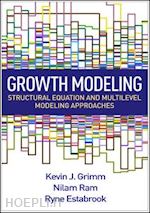Kevin J. Grimm, PhD, is Professor in the Department of Psychology at Arizona State University, where he teaches graduate courses on quantitative methods. His research interests include longitudinal methodology, exploratory data analysis, and data integration, especially the integration of longitudinal studies. His recent research has focused on nonlinearity in growth models, growth mixture models, extensions of latent change score models, and approaches for analyzing change with limited dependent variables. Dr. Grimm organizes the American Psychological Associations Advanced Training Institute on Structural Equation Modeling in Longitudinal Research and has lectured at the workshop for over 15 years. Nilam Ram, PhD, is Professor in the Departments of Communication and Psychology at Stanford University. He specializes in longitudinal research methodology and lifespan development, with a focus on how multivariate time-series and growth curve modeling approaches can contribute to our understanding of behavioral change. He uses a wide variety of longitudinal models to examine changes in human behavior at multiple levels and across multiple time scales. Coupling the theory and method with data collected using mobile technologies, Dr. Ram is integrating process-oriented analytical paradigms with data visualization, gaming, experience sampling, and the delivery of individualized interventions/treatment. Ryne Estabrook, PhD, is Assistant Professor in the Department of Medical Social Sciences at Northwestern University. His research combines multivariate longitudinal methodology, open-source statistical software, and lifespan development. His methodological work pertains to developing new methods for the study of change and incorporating longitudinal and dynamic information into measurement. Dr. Estabrook is a developer of OpenMx, an open-source statistical software package for structural equation modeling and general linear algebra. He applies his methodological and statistical research to the study of lifespan development, including work on early childhood behavior and personality in late life.











